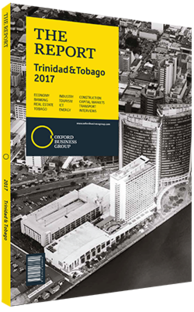Ongoing schemes tackle Trinidad and Tobago's housing deficit
Since taking office in September 2015, the government of Prime Minister Keith Rowley has been looking into the development of affordable housing with the twin objectives of meeting the needs of lower-income families and using the construction industry to stimulate employment and economic recovery. In December 2015, Rowley said his government intended to “ramp up housing construction as a major driver of the economy.” The aim is to encourage private capital to build on private or state-owned land.
Housing Deficit
Estimates of the housing deficit vary, but range above 100,000 units. Trinidad and Tobago has also had an issue with squatting on state-owned lands, with up to 19% of the population squatting. Successive governments have followed various programmes to regularise informal settlement and give squatters security of tenure. In terms of meeting new housing needs, there have been two long-standing partnership programmes with the private sector to build low-income housing. Under a joint venture, the Housing Development Corporation (HDC) enters into agreements with medium and large contractors to build new houses and communities. In addition, the Infil Programme involves the use of small contractors to build houses on vacant lots in existing HDC-owned developments. Results from both programmes have been mixed, with the first scheme failing to achieve its original target of completing 10,000 units per annum. Current targets are more modest. But the government is seeking to inject a new impetus into these plans.
New Projects
After an initial hiatus as new officials took office and assessed housing priorities, the government began pushing ahead with various new projects. Work was initiated to build 116 units at the River-Runs-Through housing project in Arima. In September 2016 Randal Mitchell, housing and urban development minister, said TT$48m ($7.2m) was being spent on the Bon Air South development in Arouca. He explained that as the government could not provide full funding for this particular project, or its wider affordable housing plans, it was employing a variety of mechanisms. On the Bon Air South project rent-to-own programmes would be offered by the HDC, which would be working with private partners. Overall, Mitchell said the government was aiming to start on 1000 new homes before the end of 2016. This meant that the People’s National Movement administration was lagging behind its electoral promise to complete 1000 house starts in its first year in office. Mitchell also said that with fewer resources than its predecessor, the government needed to “do a lot more with a lot less”. He added the target would be increased to 2500 new houses in 2017.
Another government initiative is the Accelerated Housing Programme, which seeks to promote urban renewal by building homes and social amenities. Part of this is the Neighbourhood Upgrading Programme (NUP), a follow-up to earlier squatter schemes. The NUP, which focuses on improving land titles and housing conditions, is being supported by a $50m loan from the Inter-American Development Bank (IDB).
Closing The Gap
The indications are that current levels of home construction fall short of the estimated deficit. Officials say they have a waiting list stretching beyond 170,000 applicants for government-subsidised housing, which continues to grow. Mitchell has said that his ministry has detected a particularly acute housing shortage in areas along Trinidad’s largely urbanised east/west corridor. According to an IDB study of six Caribbean countries, including T&T, total investment of $1.8bn would be needed to end poor housing conditions experienced by 1m residents. T&T’s share of that total number of residents was estimated to be just under 40,000. For the region as a whole, the IDB study highlighted the need to address issues caused by rapid urbanisation, growth of informal settlements in areas vulnerable to landslides and flooding, lack of efficient land markets, and other issues such as inaccurate land registries and the slow pace of housing programmes.
You have reached the limit of premium articles you can view for free.
Choose from the options below to purchase print or digital editions of our Reports. You can also purchase a website subscription giving you unlimited access to all of our Reports online for 12 months.
If you have already purchased this Report or have a website subscription, please login to continue.

